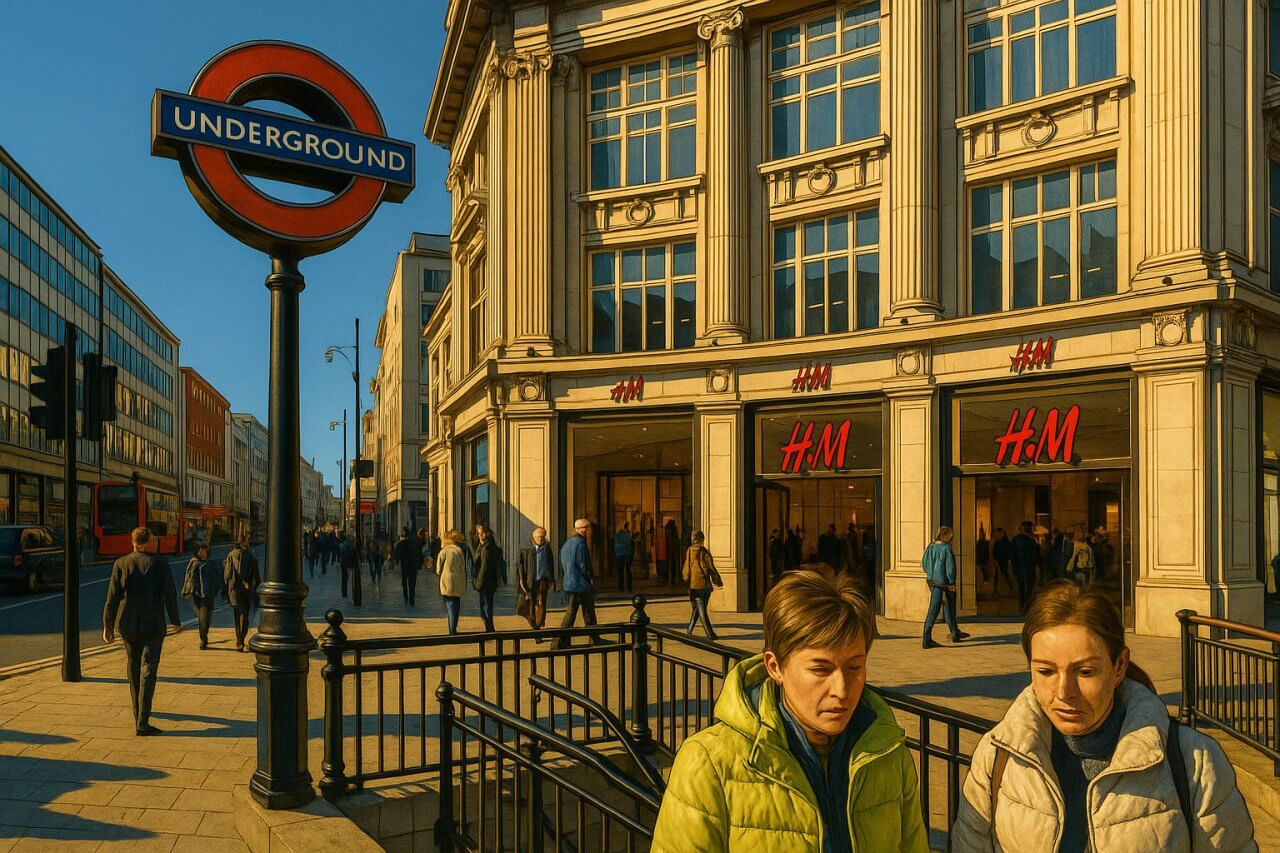
Oxford Circus Station, London
Oxford Circus Station is a prominent London Underground station located in the heart of the West End, at the busy intersection of Oxford Street and Regent Street. A key gateway to London’s bustling shopping and theatre districts, the station is one of the busiest on the Underground network, serving three major lines.
Location and Entrances
The main entrance to Oxford Circus Station is situated directly on Oxford Street, close to the junction with Regent Street. The station also has additional exits on all four corners of the crossroads: northeast, northwest, southeast, and southwest. These exits offer convenient access to the surrounding shops and offices, with the entrances integrated into the pavement with stairways leading underground.
There is no large above-ground building solely dedicated to the station. Instead, signage is visible at street level, and stairwells are recessed into the pavement. The ticket halls and other facilities are entirely below ground.
Proximity to Charing Cross
Oxford Circus Station lies approximately 0.9 miles (1.4 km) northwest of the Charing Cross traffic junction by road, taking about 5 to 10 minutes by car or 15 to 20 minutes on foot.
Services Offered
Oxford Circus Station is served exclusively by the London Underground. There are no Overground or National Rail services at this location.
London Underground Lines
The station is an interchange for three major London Underground lines:
- Bakerloo Line: Located on the lowest level, it connects to Regent’s Park (southbound) and Piccadilly Circus (northbound).
- Central Line: Runs east-west, linking to Bond Street (westbound) and Tottenham Court Road (eastbound).
- Victoria Line: Provides service between Green Park (southbound) and Warren Street (northbound).
All three lines at Oxford Circus run deep below ground and are connected by escalators and passageways. During peak hours, the station can be very crowded due to its popularity and central location.
History of Oxford Circus Station
Oxford Circus Station first opened on 10 March 1900 as part of the Central London Railway—today's Central Line. The Bakerloo Line platforms were added in 1906, and the Victoria Line was incorporated later in 1969. The integration of multiple lines over the decades transformed the station into one of London's primary Underground interchanges.
Originally, the station had two separate ticket halls for the Central and Bakerloo lines, which were eventually combined into a more modern and spacious facility to accommodate rising passenger numbers. Significant upgrades were made in the late 20th century to improve access and capacity.
Origin of the Name
The name "Oxford Circus" derives from the traffic intersection above, which was laid out in the early 19th century as part of John Nash's grand design for Regent Street. The word "circus" refers to a circular junction, though the current shape is more cross-shaped due to later modifications.
The station has always borne the name Oxford Circus since its initial opening in 1900, reflecting its location and the landmark road junction above.
Fun Facts and Points of Interest
1. Record-breaking footfall: Oxford Circus is among the top five busiest stations on the London Underground, with annual footfall often exceeding 80 million entries and exits.
2. Art on the Underground: The station has featured several temporary art installations as part of Transport for London’s Art on the Underground programme, making the passageways and platforms more engaging for commuters.
3. Ghost platforms: During engineering works in the 1960s for the Victoria Line, remnants of old platforms and tunnels from earlier configurations can still be seen by staff in disused areas of the station, though not open to the public.
4. Iconic advertising: The intersection above is known for its illuminated digital billboards. Though not part of the station itself, they contribute to Oxford Circus's identity as a visual and commercial hub of the capital.
Quick Facts
- Location: Junction of Oxford Street and Regent Street, West End, London
- Lines Served: Bakerloo, Central, Victoria (London Underground only)
- Nearest Road Junction: Oxford Circus
- Distance to Charing Cross: Approx. 0.9 miles (1.4 km) by road
- Opened: 10 March 1900 (Central Line)
- Additional Lines Added: Bakerloo Line (1906), Victoria Line (1969)
- Platform Configuration: 6 platforms (2 per line)
- Exits: Exits on all four corners of the Oxford Circus intersection
- Facilities: Ticket machines, escalators, help points, Wi-Fi
- Nearby Landmarks: Oxford Street shops, Regent Street, BBC Broadcasting House, Liberty London
- Fun Fact: Features ghost platforms from old tunnels and disused infrastructure
Oxford Circus Station is  on the Map of London Underground
on the Map of London Underground

Painting of Oxford Circus Station, London (View image in full size)